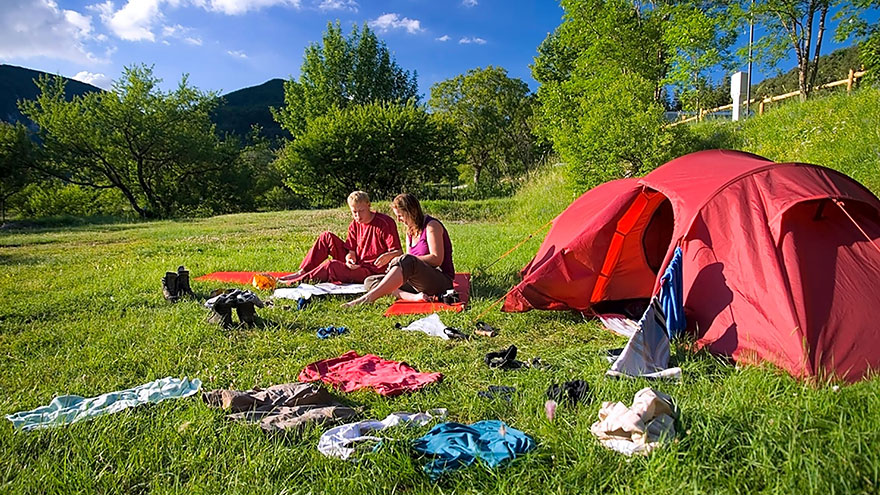Yellowstone Lake: Camping at Wolf Point
Yellowstone Lake, the largest high-elevation lake in North America, has more than 132 square miles of water surface measuring 20 miles long and 14 miles wide. Backcountry campsites situated along its 141-mile shoreline can be accessed by boat when the lake thaws in late May or June.
Wolf Point is a promontory jutting into Wolf Bay on the lake’s southern shore, marked by a boat dock and a campsite, Wolf Bay 7L5.

Getting There
Wolf Point is 12 miles east of Grant Village along the south shore of the lake. There are no backcountry trails in the area and the campsite is accessible only by boat. Motorboats and paddle craft are allowed on the lake and at the Wolf Point campsite. The lake waters are usually melted by late May or early June, but water temperatures remain between 40 and 50 F throughout the summer, which can trigger hypothermia or a heart attack if you are ejected from your boat.
Always wear a flotation device and travel as close to the shoreline as possible. Thunderstorms and winds in late afternoons are common, whipping up 5-foot waves and bringing dangers from lightning. Set out in the morning so you can be off the water and in your camp before conditions become dangerous.
Permits
Before setting out on your adventure, you must obtain both a boating permit to use the lake and a backcountry permit to camp at Wolf Point. You can reserve the dock site in advance for up to three nights by mail or fax as of Jan 1 by submitting an application with the reservation fee. You will be notified by mail or email to confirm your reservation.
Pick up your backcountry permit at the park no more than 48 hours in advance of your camping date. Your boating permit can be obtained at the same time. You can tie only one boat per camping party to the Wolf Point dock. All other boats must be removed from the water or anchored off shore.
At the Campsite
Up to two parties of eight people are allowed to camp on the shore at Wolf Point. A third party can camp in their boat providing it is self-sufficient with a berth and a galley. You are not permitted to travel inland from the campsite on foot from May 15 through July 14 due to grizzly bear activity in the area. Primitive toilet facilities and bear poles to hang food, garbage and scented items are provided at Wolf Point.
Camp at least 100 yards away from where you’ll hang your food or do any cooking. Remember to change out of clothing you’ve cooked or eaten in and hang the clothes in a plastic bag on the bear pole. Bears have heightened senses of smell that draw them to investigate even small particles of food, so avoid touching your hair while eating or cooking and thoroughly clean your hands, face and facial hair of any potential crumbs or grease when you are done.
Altitude and Weather
Yellowstone Lake lies at an elevation of more than 7,000 feet above sea level, which is considered a high altitude. If you come from a lower elevation, expect your lungs to work harder, resulting in fatigue more quickly. If you plan to paddle the 12 miles to Wolf Point, consider arriving in the area a day or two in advance to allow your body to acclimate to the altitude.
Drink extra water and hydrating fluids to help your body adjust. If you get minor symptoms of altitude sickness, such as headache and nausea, an over-the-counter pain reliever and antacid may offer relief while your body is adjusting.

